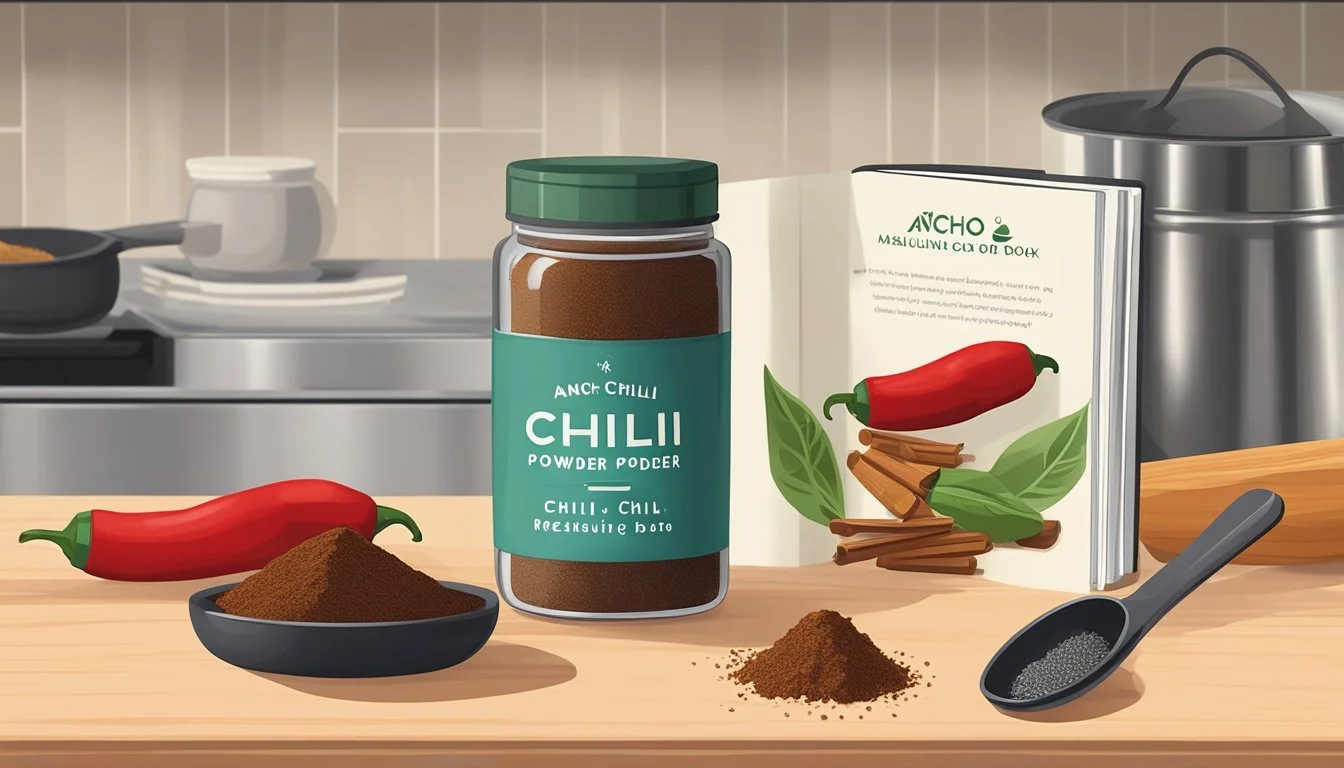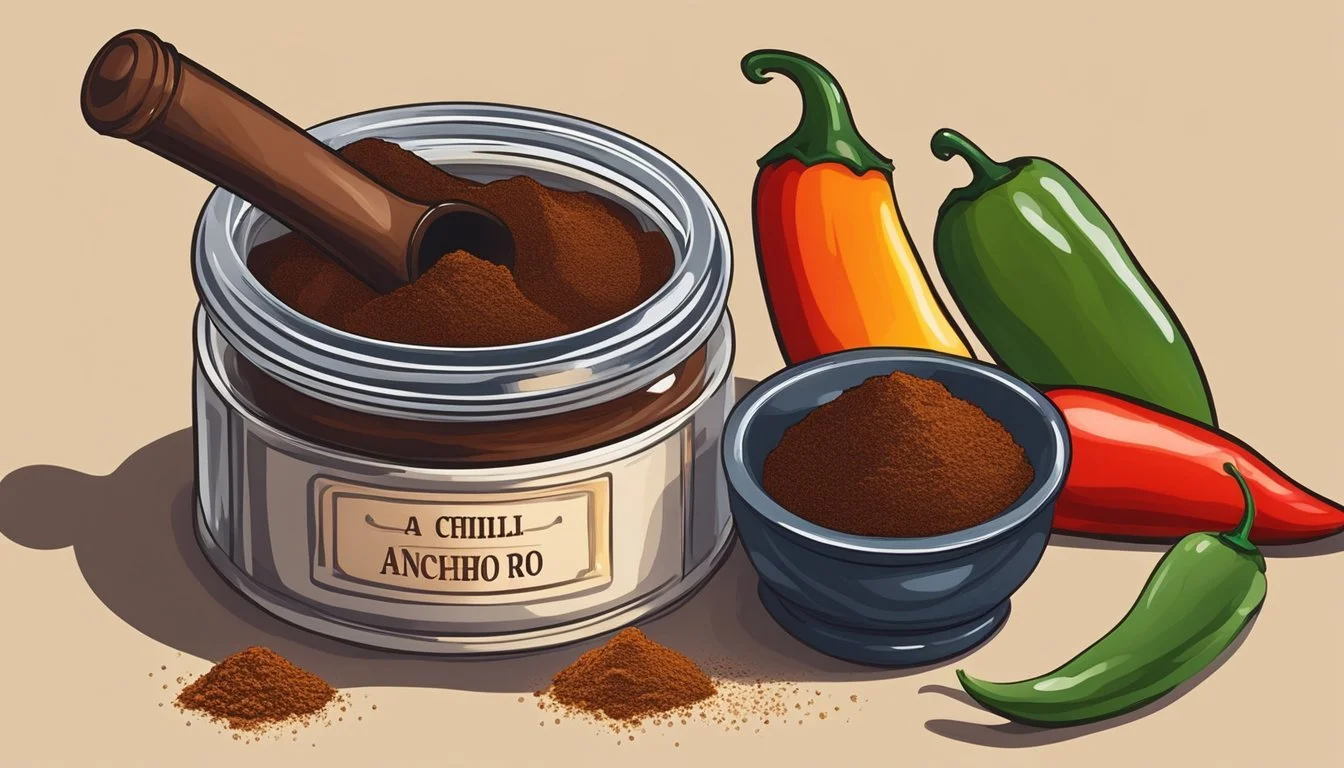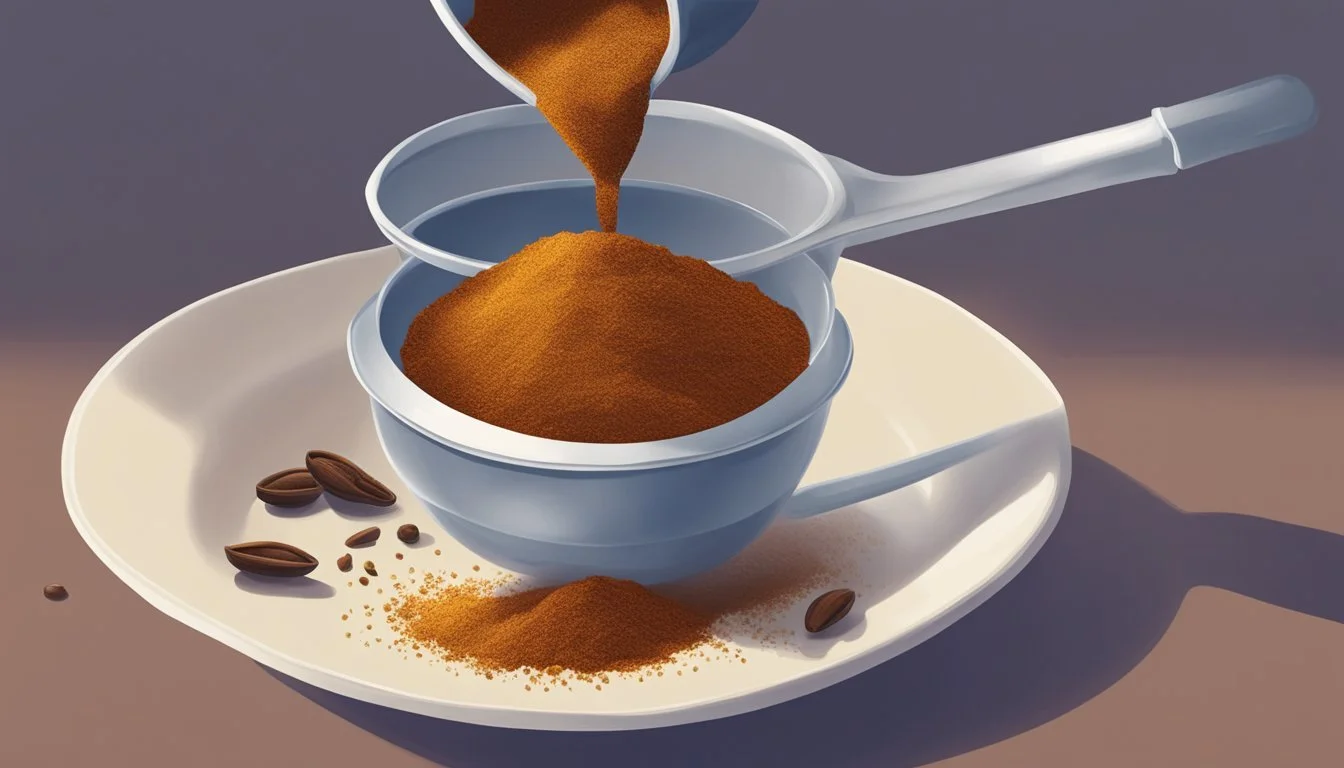Does Ancho Chili Powder Go Bad?
Essential Storage Tips and Shelf Life
Ancho chili powder, a staple in many cuisines, is prized for its rich, smoky flavor. It's made from dried poblano peppers and brings a unique depth to a variety of dishes. Despite its robust taste and essential role in many recipes, questions about its shelf life are common.
Ancho chili powder can go bad over time, primarily by losing its potency, but it typically does not spoil in the same way fresh produce might. Like other spices, its longevity depends on proper storage. Keeping it in a cool, dry place away from sunlight and moisture is crucial to maintaining its quality.
Properly stored, ancho chili powder can remain flavorful for an extended period. However, if you notice any clumping, mold growth, or a significant loss of aroma, it might be time to replace it. For those who love cooking with spices, understanding how to keep ancho chili powder fresh ensures that it continues to enhance your dishes with its distinctive smoky essence.
Understanding Ancho Chili Powder
Ancho chili powder, derived from dried poblano peppers, offers a unique flavor profile that's key in many dishes. Its mild spiciness, combined with hints of sweetness and smokiness, sets it apart from other chili powders.
Origin and Flavor Profile
Ancho chili powder originates from poblano peppers once they are dried. These peppers are known for their mild heat and rich, complex flavors. The resulting powder is characterized by its smoky, sweet undertones and notes of cinnamon, tobacco, and occasionally dark chocolate. Scoville heat units (SHU) for anchos typically range from 1,000 to 1,500, placing it well below chipotle and other hot peppers on the heat scale.
Ancho vs Other Chili Powders
Ancho chili powder differs significantly from standard chili powder. Chili powder is a blend of various ground peppers, often including cumin and oregano, and can vary greatly in spiciness and flavor complexity. In contrast, ancho chili powder is made solely from dried poblano peppers, giving it a consistent, mild heat and distinctive sweet-smoky flavor. This single-origin approach means ancho powder is less about heat and more about depth of flavor.
Culinary Uses
Ancho chili powder's versatile nature makes it a staple in many cuisines, particularly Mexican and Tex-Mex dishes. It can enhance the richness of stews and add depth to rubs for meats. Often used in enchilada sauces, it also pairs well with sweet ingredients like chocolate in mole sauces. Its mild heat allows it to complement rather than overpower other flavors, making it ideal for a wide range of savory dishes.
Shelf Life and Spoilage
Ancho chili powder, when stored correctly, can last for a significant amount of time. Factors like storage conditions, exposure to light, air, and moisture play a critical role in maintaining its quality.
Signs of Spoilage
Spoilage in ancho chili powder is often easy to detect. The smell is a crucial indicator; spoiled chili powder will lose its robust aroma, sometimes smelling musty or off. The taste can also deteriorate, becoming bland or unpleasant. A change in color from a vibrant reddish-brown to a duller hue signifies potential spoilage.
Inspect for mold or clumping. If visible mold is present or if the powder has solidified into clumps, it should be discarded immediately. These signs indicate that moisture has compromised the integrity of the spice.
Factors Affecting Shelf Life
Several factors affect the shelf life of ancho chili powder. Light exposure can degrade the quality and potency of the spice. Air and moisture are major contributors to spoilage. Keeping the chili powder in an airtight container minimizes these risks.
Temperature also plays a role. Storing in a cool, dark place, such as a pantry away from direct sunlight, extends its shelf life. Ideally, the storage temperature should be consistent and not too warm, as heat accelerates deterioration.
Storage conditions are crucial. Improper storage, such as leaving the container open or in a humid environment, shortens the chili powder’s usability. Ensuring it is properly stored in a dry, stable atmosphere helps maintain its quality.
Estimated Shelf Life
Ancho chili powder, like most dry spices, generally has a long shelf life. If properly stored in airtight containers, it can last between 2 to 4 years, retaining its optimum flavor and potency within the first year. Over time, the powder’s peak quality may diminish, but it remains usable beyond the expiration date if no spoilage signs are detected.
Commercially produced ancho chili powder often comes with a use-by date. While it can be safe to use after this date, its potency and quality might not be at their best. Always check for signs of spoilage before use.
Proper Storage Methods
Proper storage of ancho chili powder is essential to maintain its flavor and potency. Critical factors include optimal storage conditions, preventing exposure to moisture and air, and choosing the right containers and storage locations.
Storage Conditions
For the best results, store ancho chili powder in a cool, dry, and dark place. Heat and light can degrade the spice, causing it to lose its flavor. A dark cupboard or pantry is ideal.
Temperature: Keep the temperature below 70°F to prevent spoiling. A spice cabinet away from the stove is a good spot.
Humidity: Ensure the place is dry, as moisture can lead to mold growth, affecting the quality of the chili powder.
Preventing Moisture and Air Exposure
Moisture and air are the main enemies of chili powder. They accelerate the degradation process, making the spice lose its potency.
Airtight Containers: Use airtight containers to minimize exposure. Glass jars with tight-fitting lids or specially designed spice containers are excellent choices.
Sealed Packaging: When buying in bulk, consider vacuum-sealing smaller portions to keep them fresh for longer.
Air exposure can also be minimized by avoiding frequent opening and closing of the container.
Best Practices for Container and Location
Selecting the right container and location is key.
Containers: Opt for glass or high-quality plastic containers. Ensure the seals are fully intact to keep out air and moisture.
Location: Store the chili powder in a dark, cool section of your pantry or spice cabinet. Avoid places with temperature fluctuations, such as near the stove or dishwasher.
Labeling: Always label containers with the purchase or packing date to keep track of freshness.
By adhering to these methods, you can prolong the shelf life of your ancho chili powder, preserving its rich flavor for as long as possible.
Recognizing Freshness and Potency
Recognizing the freshness and potency of ancho chili powder involves observing changes in color, aroma, and flavor. Knowing how to test these qualities over time ensures you're using the spice at its best.
Indicators of Freshness
Fresh ancho chili powder typically has a vibrant red color, sometimes bordering on deep maroon. Over time, if it turns dull brown, this is a sign it may have lost some of its freshness.
The aroma should be rich and earthy with a hint of sweetness. If it starts smelling stale or develops a rancid odor, it’s likely past its prime.
In terms of flavor, fresh ancho chili powder offers a warm, slightly fruity taste with mild heat. A noticeable decline in these attributes indicates the spice is no longer fresh.
Texture can also be a clue. Fresh powder should be fine and free-flowing. If it becomes clumpy or feels gritty, it may have been exposed to moisture or air, affecting its quality.
Testing Potency Over Time
To test the potency of ancho chili powder, start by tasting a small amount. Fresh powder should have a distinct flavor and mild heat. If the taste is weak, it may have lost its potency.
Another method is the aroma test. Crush a small pinch of the powder and take a sniff. A strong, fragrant aroma indicates good potency. If the smell is faint, it’s likely time to replace it.
Regular appearance checks also help. Maintain a habit of examining the powder's color and texture. Combine these observations with periodic taste and smell tests to ensure you're always using a potent, fresh spice.
Handling and Using Ancho Chili Powder
Ancho chili powder is a versatile spice with a mild heat level and a rich, smoky flavor. Key aspects include incorporating it into various dishes and rehydrating techniques for optimal texture and flavor.
Incorporating Into Dishes
Ancho chili powder can enhance a wide range of dishes, providing a unique depth of flavor. It is commonly used in Mexican cuisine to add earthiness and subtle heat to sauces.
It works well in stews, imparting a fruity, smoky note that complements hearty ingredients like beans and meats. When used in rubs for meats, it adds a smoky sweetness that enhances grilled or roasted dishes.
In savory dishes, the balance of fruitiness and smokiness pairs well with other spices like cumin and garlic. Adding ancho chili powder to soups can elevate the flavor profile, giving a rich, complex taste.
Rehydration Techniques
Rehydrating ancho chili powder is essential for certain recipes that require a deeper flavor and smoother texture. To rehydrate, start by soaking the powder in warm water for about 10-15 minutes. This allows the powder to absorb moisture and regain some of its original texture.
For a concentrated paste, mix the rehydrated powder with a small amount of water. This paste can be incorporated into sauces or used as a marinade. Rehydrated ancho chili powder enhances the flavor intensity in stews and soups.
Proper rehydration techniques can significantly impact the quality of your dishes, bringing out the full potential of this versatile spice.
Safety and Health Considerations
Ancho chili powder, like any spice, can experience changes that might impact health and safety. Recognizing contamination and being aware of allergies or infestations are critical aspects of ensuring its safe use.
Recognizing Contamination
Mold Growth: Ancho chili powder can become harmful if exposed to moisture, as mold grows easily in damp conditions. Moldy spice typically shows visible mold, musty odors, and off-colors.
Signs of Spoilage: Harmful signs like unusual clumping, discoloration, or an off-putting smell should prompt caution. It's unsafe to use ancho chili powder exhibiting these symptoms.
Proper Storage: Ensure to store ancho chili powder in an airtight container, away from moisture and heat. This prevents mold growth and maintains its quality.
Precautions with Allergic Reactions and Bugs
Allergies: Some individuals might have allergic reactions to chili powder. Common signs include itching, swelling, or respiratory issues. Exercise caution if you are prone to allergies.
Presence of Bugs: Infestations can happen, leading to small bugs or their larvae present in the powder. Check for tiny holes in packaging or visible pests.
Regular Checks: Regularly inspect ancho chili powder for bugs or holes. If found, discard the contaminated product immediately to avoid health risks.
Maintaining vigilance in these areas ensures ancho chili powder remains a safe and enjoyable ingredient.
Renewing and Replacing Supplies
Regularly renewing and replacing ancho chili powder ensures optimal quality and flavor in your dishes. Knowing when to replace your supply and considering homemade alternatives are key strategies.
Assessing When to Replace
Ancho chili powder doesn't have a strict expiration date, but its quality diminishes over time. Key indicators to watch include:
Discoloration: Fresh ancho chili powder typically has a deep reddish-brown color. If it turns dull or grayish, it's time to replace it.
Off Smell: Ancho chili powder should have an earthy, smoky aroma. An off or stale smell signals it is past its prime.
Clumping: Moisture can cause the powder to clump. While it can be broken up, consistent clumping may indicate reduced freshness.
To maintain freshness, it's advisable to store ancho chili powder in an airtight container in a cool, dry place. Regularly inspecting these factors helps ensure you're using the best quality spice in your cooking.
Homemade Alternatives
Making your own ancho chili powder can be a practical and fresher alternative. Steps to create homemade powder include:
Selecting Ancho Chiles: Use dried ancho chiles. Look for ones that are pliable and free from blemishes.
Preparation: Remove the seeds and stems. Tear the chiles into smaller pieces.
Grinding: Use a spice grinder or food processor to grind the chiles into a fine powder.
Storage: Like the store-bought version, keep homemade powder in an airtight container in a cool, dry place.
Creating homemade ancho chili powder ensures a fresher product and allows control over the quality of ingredients used. It’s also an opportunity to experiment with varying levels of spiciness and smokiness by combining different dried peppers.








